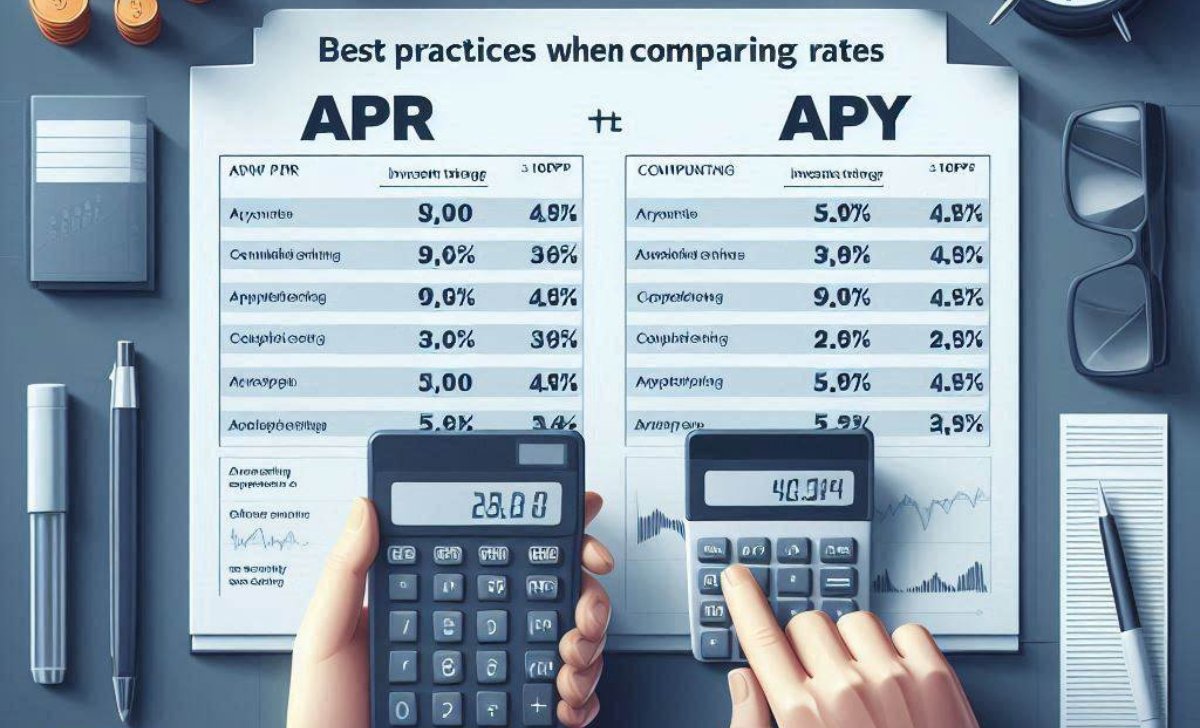APR to APY Calculator is the key to unlocking the true cost or return of financial products by factoring in compound interest. It simplifies complex formulas, helping users make informed decisions when comparing loans, savings, or investments.
In this guide of TopCoin9, we’ll cover the definitions of APR and APY, the conversion formula, real-world examples, trusted calculator tools, and best practices for using them effectively.
What Is APR and How Does It Work?

APR stands for Annual Percentage Rate, a standardized way to express the cost of borrowing or the return on investment over a year. It includes the nominal interest rate and may also incorporate certain fees. However, APR does not account for compound interest, which is where it becomes a limited metric in many financial decisions.
According to the Consumer Financial Protection Bureau (CFPB, 2022), lenders in the U.S. are required to disclose APR to help borrowers compare loan products. Despite this, APR can underrepresent the true cost of a loan, especially when compounding occurs more frequently than annually.
In summary, APR is straightforward and widely used, but not always comprehensive — especially when compound interest enters the picture. And that’s exactly where APY, like APR to APY Calculator steps in to provide a fuller picture through the next content!
What Is APY and Why It Matters
APY or Annual Percentage Yield, includes the effect of compounding, making it a more accurate reflection of the true return or cost of financial products. The more frequently interest compounds, the higher the APY will be — even if the APR remains the same.
For example, a savings account that compounds interest daily will yield a significantly higher APY than one that compounds monthly, even with identical APRs. As reported by Investopedia (2023), APY is especially crucial for savings, CDs, buying crypto and investment accounts, where understanding compound growth is essential.
The U.S. Securities and Exchange Commission (SEC) also emphasizes the importance of APY for investors evaluating interest-bearing accounts.
Now that we see APY as the “true” interest, you might wonder — how do you go from APR to APY? That’s where an APR to APY Calculator comes in, let’s explore that in the next section!
APR to APY Calculator – Convert Instantly

Manually converting APR to APY involves complex formulas, but modern APR to APY Calculators automate the process instantly. By inputting the nominal APR and compounding frequency (e.g., 12 for monthly or 365 for daily), users receive accurate APY results within seconds.
These tools are invaluable for:
- Comparing loan offers with varying compounding intervals
- Assessing true returns on savings accounts and certificates of deposit (CDs)
- Making informed investment decisions
Trusted platforms like Bankrate and NerdWallet (both updated 2024) offer free, accurate APR to APY calculators designed to help users understand the real cost or yield of financial products.
According to Investopedia (2023), such calculators are essential for anyone seeking to make evidence-based financial decisions without the risk of misinterpreting interest rates.
But what if you want to understand the math behind it all? Let’s break it down in the next part!
The Formula Behind APR to APY Conversion
The standard formula to convert APR to APY is:
APY = (1 + (APR / n))ⁿ – 1
Where:
- APR is the annual percentage rate (expressed as a decimal)
- n is the number of compounding periods per year
Let’s apply this formula:
If your APR is 5% (0.05) and interest is compounded monthly (n = 12), then:
APY = (1 + 0.05 / 12)¹² – 1 = 0.05116 or 5.116%
As cited by Khan Academy (2021), this formula illustrates how compounding magnifies returns—or costs—over time. It’s essential for both consumers and professionals in banking or investing to grasp this logic.
Still, not everyone is comfortable with formulas, which is why we’ve created a quick-reference table next. Find out more in the next section!
APR to APY Conversion Table

Here’s a handy table that shows common APR values and their APY equivalents based on different compounding frequencies like APY to APR calculator:
| APR (%) | Daily Compounding (365x) | Monthly Compounding (12x) | Quarterly Compounding (4x) |
| 3.00% | 3.05% | 3.04% | 3.03% |
| 5.00% | 5.13% | 5.12% | 5.09% |
| 10.00% | 10.52% | 10.47% | 10.38% |
This table is built based on the compound interest formula referenced above and used in financial modeling by Harvard Business School (2020) in their introductory finance coursework.
So, when exactly should you use APR vs. APY? Let’s dive into the application side through the next content!
When Should You Use APR or APY?
APR is most appropriate when you’re borrowing money, such as with:
- Credit cards
- Personal loans
- Mortgages
It gives a good overview of what you’ll pay annually, including fees. However, APY should be your focus when you’re earning money, especially in:
- Savings accounts
- Certificates of deposit (CDs)
- Investment portfolios with compound interest
According to Forbes Advisor (2023), using the wrong rate when comparing financial products can lead to costly mistakes. Just like a security audit helps uncover hidden risks in your digital infrastructure, choosing the right rate ensures transparency in your financial planning. Want to avoid such pitfalls? Keep reading for best practices in the next section!
Best Practices When Comparing Rates

Here’s how to make the smartest use of both APR and APY:
- Always convert APR to APY when comparing investment returns.
- Use an APR to APY Calculator for consistent and accurate results.
- Watch out for hidden compounding intervals, especially in credit card terms.
- Ask your financial institution for both rates if only one is listed.
These strategies, as recommended by the Federal Reserve (2022), empower consumers to see the full picture and avoid misleading interest presentations.
Conclusion
Understanding how to use an APR to APY Calculator can make a big difference in how you evaluate financial products and plan your investments. We hope this guide has helped you grasp the key concepts and apply them with confidence. Don’t forget to follow TopCoin9 for more insightful financial tips and the latest tools to support your smart money decisions.

Emily Thompson is a highly skilled crypto writer and strategist with extensive experience in blockchain journalism, having contributed to Cointelegraph and Binance Academy. At TopCoin9, she ensures high-quality, SEO-optimized content that educates and informs the crypto community.
Email: [email protected]












